System Understanding
This component involved reviewing available regional water quality information in each of the major catchments of the Fitzroy Region and collating existing information on environmental values, water quality objectives, and how our hydrological systems work. The current status of freshwater, coastal and marine assets were reviewed, threats identified and a determination of their trend made.
A review of the science underpinning core assumptions and recommended land management practices was also completed.
Links
Marine Risk Assessment
Agricultural Pollutant Loads and Sources
Other Pollutant Loads and Sources
Summary of Current Status of Fitzroy Basin Assets
Freshwater Aquatic Environmental Values and Water Quality Objectives
Coastal Aquatic Environmental Values and Water Quality Objectives
Marine Aquatic Environmental Values and Water Quality Objectives
Reports
Synthesis Report
Coastal and Marine Status Report
Marine Risk Report
Environmental-Economic Values of Marine and Coastal Natural Assets Report
Ports Synthesis
Urban Water Quality Improvement Scoping Report
Grazing and Farming Priority Areas Identified
The Queensland Department of Agriculture and Forestry led a team of scientists to undertake a mixed-methods approach to determine the priority areas in the catchment that sediment could be reduced in the most cost-effective way. This was undertaken across the grazing and farming industries for all 192 NCs in the Fitzroy Region, including coastal catchments. The four key factors considered in this analysis were:
- Amount of sediment per hectare that is eroded and delivered to the Reef.
- A groundcover factor that considered the impact of rainfall variability.
- The effectiveness of current management practices and the likelihood of adoption of new practices.
- The cost of delivering actions in each of the 192 NCs on both grazing and farming enterprises.
Reports
Synthesis Report
Prioritisation of Neighbourhood Catchments report
Ecologically Relevant Targets report
Fitzroy Sediment Story Report
Consideration of Marine Risk and the Fitzroy Sediment Story
An assessment of the relative marine risk posed by each of the rivers in the Fitzroy Region, including coastal catchments was made. This included gaining a better understanding of the source and fate of sediment in our region, identifying the type of sediment that is having the greatest impact on Reef health and the proportion of eroded anthropogenic sediment that reaches the Reef.
Link
Marine Risk Assessment
Reports
Synthesis Report
Marine Risk Report
Fitzroy Sediment Story Report
Ecologically Relevant Targets report
Define Priority Areas and Identify Management Options
Once grazing and farming priority areas were identified and drivers of marine risk and sediment transport were analysed, the integrated results allowed defined priority areas and management options to be identified that improve Reef water quality. These findings were refined through discussion with regional experts and on-ground field staff who are familiar with the local landscape and some of the key issues affecting soil health.
Links
Grazing priorities
Grains priorities
Wetland Prioritisation
Led by FBA with involvement from expert consultants, research scientists and Great Barrier Reef Marine Park Authority (GBRMPA) staff, this component reviewed the values, threats and capacity of key wetlands in the region. A variety of criteria were considered such as social, recreation and indigenous values, ecosystem services, habitat extent, species richness and diversity, presence of invasive species and water quality. Priority areas to either maintain or restore ecosystem function were identified.
Link
Priority Wetlands
Reports
Synthesis Report
Wetland Prioritisation Report
Fishway Prioritisation
Led by FBA with involvement from expert consultants, this component assessed the region’s fish barriers. Over 10,000 potential fish barriers were identified and the top 46 barriers that are likely to have the greatest impact on habitat extent, native fish abundance and diversity, and connectivity to the Reef were prioritised.
Link
Priority Fishways
Reports
Synthesis Report
Fishway Prioritisation Report
Define Priority Areas and Identify Management Options
The wetland and fishway prioritisations were integrated to identify environmental priority areas that provide the greatest ecosystem services. Analysis of drivers was undertaken and management options identified to improve Reed water quality.
Links
Ecosystem Services Prioritisation
Blue Maps
Eco-Calculator
Reports
Synthesis Report
Ecosystem Prioritisation Report
Planning
The findings of the review undertaken and the tools developed through both the agriculture and environmental prioritisation processes should be used together to identify final project locations and specific projects.
Different priorities will require different considerations of the above resources and should be used in conjunction with existing tools such as forage reports, veg-machine outputs, property-scale maps and site visits. Projects should seek to achieve multiple outcomes whenever possible. For example, controlling cattle access to a wetland can help restore the ecological function of the wetland, provide a refugee in times of drought for native animals and also achieve sediment savings to the Reef if management actions are implemented appropriately.
Links
View WQIP:2015 Planning webpage
Delivery
The priority management actions identified in WQIP:2015 will be delivered through informing existing programs such as the Australian Government’s Reef Programme and Reef Trust Phase I. Future funding sources are likely to include future Reef Trust phases, the Australian Government's National Landcare Programme and the Queensland Government's Natural Resource Management Investment Program.
Links
View WQIP:2015 Delivery webpage
Monitoring and Evaluation
Monitoring of progress against targets will be undertaken by reporting management practices to the Queensland Government's Paddock to Reef program. These results will then be modelled and an estimation of the reduction in sediment/nutrient/pesticide loads will be calculated. Likewise, the Reef Report Card also tracks changes in extent of riparian vegetation and net loss/gain of regional wetlands. As the Fitzroy WQIP:2015 is a web-based document, progress against targets will be updated annually and an evaluation of effectiveness undertaken.
Links
View WQIP:20155 Monitoring & Evaluation webpage
Review
The Fitzroy WQIP:2015 is a three- to five-year document and should be comprehensively reviewed before 2020.
Interim reviews should be undertaken as new data becomes available (e.g. new modelled outputs of sediment delivery rates and sources). WQIP:2015 has been designed so it can incorporate new data into the prioritisation tools relatively easily.

